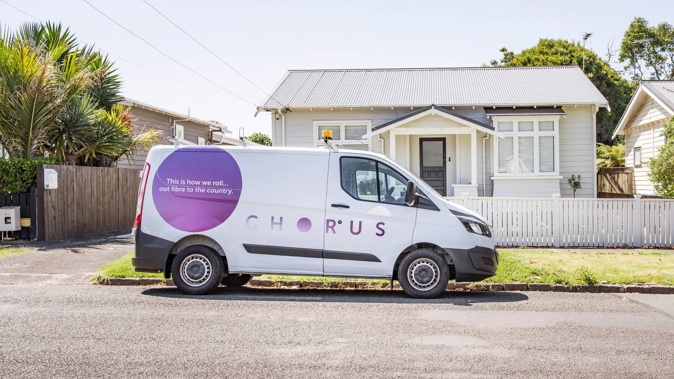
Despite a drop in profits, Chorus has announced an unimputed interim dividend of 17 cents per share for the first half of the 2023 financial year, ending December 31.
This dividend is 3 cents per share (cps) higher than the interim dividend delivered in the 2022 financial year. A final unimputed dividend of 25.5 cps is expected to be announced in August to meet its guidance of a 42.5 cps dividend for the full year.
The internet infrastructure provider’s net profit for the period plummeted by 79 per cent from $42 million to $9m compared with the same period in the previous year.
In a letter to investors, Chorus chair Mark Cross attributed the large drop to rising interest rates and “the need to refinance a large tranche of debt due for repayment later in 2023″.
The depreciation of copper cables in areas where fibre was available also contributed to the dip, Cross said.
Total revenue for the period was up $4m from the first half of the 2022 financial year to $487m, with a $35m growth in fibre broadband revenues making up for a $25m drop in copper.
Underlying earnings before interest, tax, depreciation and amortisation (Ebitda) were $342m, up $10m on the same period the prior year when one-off gains were excluded.
As a result, the company is increasing Ebitda full-year guidance from $675m to $690m, up from $655m to $675m, although this does not include any impact related to Cyclone Gabrielle.
In a separate announcement, the continuation of Chorus’ $150m share buyback was also confirmed to start from Feb 21, 2023. The next stage of the programme is for up to $78m, making up the balance after buying $72m worth of shares in the 12 months from Feb 22, 2022.
Shares will be purchased through the New Zealand Exchange (NZX) as well as the Australian Securities Exchange (ASX) for market price and will be cancelled upon acquisition.
In December 2022, the fibre rollout programme was completed with fibre reaching 87 per cent of NZ’s population. In the areas where fibre is available, uptake continues to grow with 38,000 more premises signing on.
There is now 71 per cent fibre uptake in completed rollout areas, up from 69 per cent at the start of the 2023 financial year in July.
Cross’ letter said fibre reaching 87 per cent of the population was “clearly too low” but that trying to emulate the 99 per cent coverage that some European countries are aiming for is “probably too high”.
Chorus chief executive JB Rousselot said: “We already have a plan that could extend fibre to 90 per cent of the population, with the right regulatory and policy settings, and we see opportunities to invest in the ongoing enhancement and sustainability of the network.”
While the earnings were not subject to the impact of Cyclone Gabrielle, the topic was addressed.
The company is working to repair the faults that the cyclone caused and recognised that there will be operational challenges until the faults are resolved in full, which could take some time.
Rousselot said that the company lacked the number of technicians it needed to complete fibre installations in the 2023 financial half-year, although the workforce gap had decreased from 380 to 220 in recent months. “We expect to recruit another 150 technicians within a few months”, he said.
“In the meantime, the widespread community devastation caused by the recent cyclones means we’re having to reprioritise some work so we can focus on restoration efforts.”
He added that fibre networks were more resilient to water damage and easier to fix than copper. Cross said in his letter that even once the fibre cables are fixed or temporarily bypassed, further faults at more local levels could not be assessed until power returned to the areas.
“We’ll be working with New Zealand’s major network providers to consider what can be learnt from Cyclone Gabrielle and what additional steps we can take to further increase the resiliency of our infrastructure.”
- BusinessDesk
Take your Radio, Podcasts and Music with you









